Discoveries in Japan
Students conduct research with renowned Japanese labs under the guidance of two Montclair professors
Posted in: Homepage News, Research, Science and Technology, University
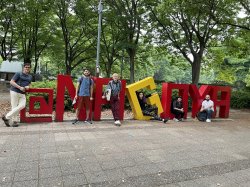
Montclair State University professors Carlos Molina, Biology, and Mika Munakata, Mathematics, led a science program in Japan with six students this summer. The students conducted research with world-renowned Japanese researchers over the nine-week program. The undergraduate and doctoral students were selected by the two professors from 40 applicants for a unique research program that took place at three facilities in the country.
The students, who hailed from various universities, worked alongside researchers at the National Institute of Genetics in Mishima, the Institute of Transformative Bio-Molecules at Nagoya University and the National Institute of Basic Biology in Okazaki this summer. Among the students, who worked in pairs at each lab, was Montclair alumnus Paolo Turano ’21.
“It was a great learning experience,” says Turano, now a doctoral student in the molecular biology, genetics and cancer program at Rutgers University. “I’m super thankful, to Dr. [Noriyoshi] Sakai, the lab, the program, my mentors…It was honestly an amazing experience, both culturally and scientifically.”
Molina and Munakata fondly remember doing post-doctoral research in France and participating in an undergraduate study abroad experience in Kenya, respectively, and how it expanded their worlds, so they wanted to provide a similar opportunity to students, particularly those underrepresented in STEM fields. “Why stay in one place in the world? We can do research anywhere,” Molina says.
The professors were awarded a $300,000 National Science Foundation grant in 2020 to do just that. The program, which was postponed for one year due to the pandemic, provides international research experiences for students in Japan for three consecutive summers. The grant pays for all student travel and housing, as well as a $5,000 stipend. “It’s really like an internship,” explains Munakata, adding, “We wanted to make sure that we gave opportunities to students who would not otherwise pursue these kinds of opportunities. We didn’t want to take away their opportunity to earn money during the summer.”
Molina and Munakata are currently accepting applications for next summer’s IRES: Summer Biology Research Program in Japan (NSF Project #1952513). The professors will again cast a wide net to recruit traditionally underrepresented students from women’s colleges, Historically Black Colleges and Universities and Hispanic-Serving Institutions for the “U.S.-Japan study of novel genetic elements regulating seasonal behavior of medaka fish.”
Director of International Academic Initiatives Tim White, whose team supports study abroad and other international academic projects, says that Molina and Munakata “designed an impressive summer experience, which enhances both research and intercultural skills for students.” He encouraged students to apply, noting: “This opportunity for research in Japan is absolutely fantastic for Montclair State students.”
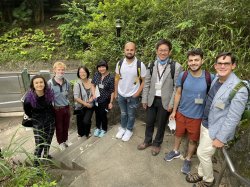
“The purpose of the trip was for them to do research on current molecular biology projects and in international collaborations, so that they would gain a deeper understanding of what it means to engage in teamwork and communication skills in an international setting,” Munakata says. “These are all undergraduate or PhD students who want to become researchers in science.”
Munakata says the idea is to expose them to these opportunities so that they may “collaborate across language and cultural barriers” in the future, and indeed, her data indicate that the students are considering starting international projects for their own programs or for their students, should they become researchers and educators in the future.
Luke Nicholson says that prior to his Japan research trip, he viewed visiting other countries as “separate from my career goals.” Now, the Columbia University undergraduate student says: “I would be totally comfortable even applying to PhD programs in different countries. I could totally see myself living in another country.”
Fellow researcher Jay Miguel Fonticella, a first-year doctoral student at Harvard University, says: “At my university they always speak about having a global perspective toward science but this experience opened my eyes to that.”
For the program, Munakata is studying “the impact of this international experience on students’ understandings about science and about their own perceptions about their own role in the scientific community.”
Despite an occasional language barrier, students were able to adapt, she says. “They realized that science is international. That was an important lesson for the students to realize that the U.S. way is not the only way; there are different ways,” Munakata says. “It’s possible to work with international researchers, but there are special considerations that have to be taken into account.”
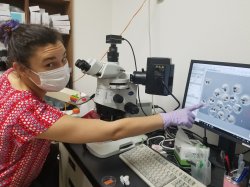
While in Japan, the students worked in state-of-the-art facilities, such as the National Institute of Basic Biology, where they utilized cutting-edge gene editing techniques and learned about the role genes play in behavioral sciences. Specifically, they studied how clock genes, which affect sleep cycles, affect the mood or behavior of the fish. “Two students were working directly with trying to find natural products that may affect clock genes – genes that are involved in our daily cycles, our sleeping cycle, our seasonal cycles and so forth,” says Molina. “One idea is to see if they can come up with natural products that may help with jet lag, for example. Those genes not only affect our circadian rhythm but our behavior. So, if we don’t sleep well, if we don’t get well rested, then that may impinge on your behavior and could lead to other psychological problems.”
In the second project, students used zebrafish to research genes involved in neuronal function by studying glial cells which “are also very important in behavioral changes,” Molina says.
Meanwhile, Turano worked with inbred zebrafish. While he says that nine weeks is not a long time when it comes to scientific research, he was able to gain some valuable experience he may not have had the opportunity to at this point in his academic journey.
Turano, who is interested in aging and research, was placed at the National Institute of Genetics. He and his lab mate Yamil Negron, a doctoral student at the University of Puerto Rico, used zebrafish as a model organism. The lab had previously developed an inbred strain of zebrafish. In doing so, they discovered that the inbred strain aged prematurely, resulting in a 30% shorter lifespan, Turano says. “I tried to figure out one of the potential reasons why these zebrafish were aging prematurely.”
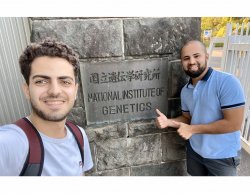
Although a summer is too short to solve such a complex biological riddle, Turano was able to develop a protocol that Japanese researchers are now using to measure telomeres, the physical ends of chromosomes, in the zebrafish.
“My happiest moment was when I finally got an experiment to work in the lab,” Turano says smiling. “The way we chose to measure telomere length is the quantitative polymerase chain reaction, and it’s very straightforward but it can be fairly difficult and no one in the lab had tried doing that prior. It took me three weeks before I could get it to just work, let alone actually get the results of measurement. That was probably my most memorable moment.”
Telomeres are extremely important. “In humans – and also in zebrafish – as we age, these progressively get shorter and shorter, until they become so short that they just die,” Turano says.
Once able to measure telomeres, he and his lab mates continued their research in order to determine whether the fish had shorter telomeres to begin with, a condition known as dyskeratosis congenita in humans. “If the mechanisms that regulate the length of the telomeres are messed up to begin with, then you would imagine that you’re going to have a shorter lifespan,” Turano explains. “Initially, we thought maybe these inbred zebrafish had short telomeres. So, we measured the telomere length of the inbred zebrafish and the normal chain of zebrafish, and there were no significant differences.” As is typical in scientific research, finding answers often involves testing a hypothesis, ruling out one possible cause and then pursuing another scientific path.
Turano says the experience also helped him improve his communications skills.
“Sometimes you really have to think, What’s the simplest and best way to say this so that my message is clearly understood? So that made me think about communication as a whole, not just necessarily with people that aren’t English natives but just effectively communicating. It’s so important in science: You want to get your ideas across clearly and effectively.”
Outside of the lab work, the highlight of Turano’s time in Japan was climbing Mount Fuji with his lab mates. Japan’s highest and most famous mountain was only a half-hour drive away. It took them about 13 hours to ascend and descend.
“There were so many cool things that we did in Japan,” he says, lighting up. “The one I’m most proud about is going on Mount Fuji. That was super cool. We had a lot of fun.”
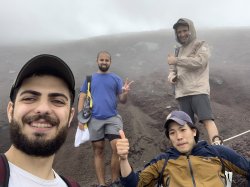
Applications are currently being accepted for next summer’s program. The deadline for submission is November 9. To learn more and apply visit IRES: Summer Biology Research Program in Japan.
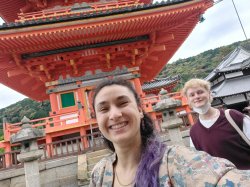
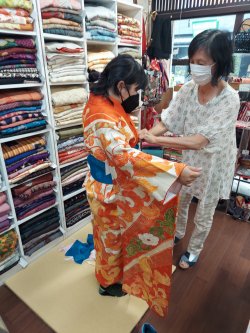
Story by Staff Writer Sylvia A. Martinez. Photos courtesy of Carlos Molina and Mika Munakata.
